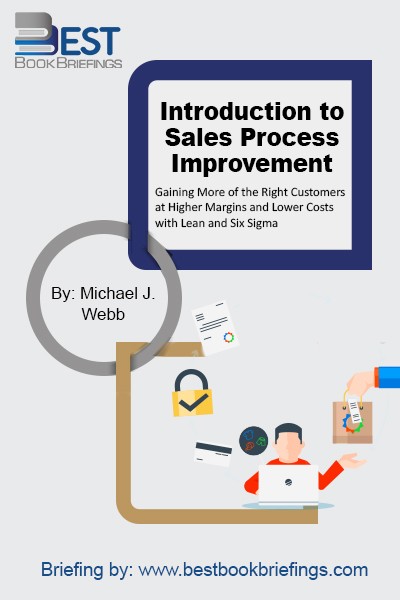Introduction to Sales Process Improvement
Gaining More of the Right Customers at Higher Margins and Lower Costs with Lean and Six Sigma
Number of pages: 182
Publisher: Sales Performance Consultants, Inc.
BBB Library: Sales and Marketing
ISBN: 9780977107209
Editorial Review
Marketing and selling often represent about half of the costs incurred in any business. There is enormous, and largely unseen, opportunity in most business to improve the performance of marketing, selling and servicing. Yet this world is comprised of human beings where perceptions and emotions rule.
Books on Related Topics

It’s not an accident that almost all the brands, products, and careers that have succeeded with New Marketing are brand-new and fresh. The New Marketing demands more than a meatball. It insists on reinvention of the entire organization and the products it creates. Marketing is now about a lot more than

As a kid I built my own Legoland at home. I slept on a bed constructed of Lego. I was well and truly hooked on a brand. I just never realized it. Today, I am witness to brand addiction at unprecedented levels. Cunning marketers using tricks and traps designed to serve one

Salespeople are like lions hunting for their prey; experienced lions do not waste their time and energy over many scattered opportunities. Rather, they focus on the prey that is worth their energy, such as zebras. Therefore, “zebras” are a metaphor for the “right” prospects because they are “unique” in the sense

In Pricing with Confidence, pricing gurus Reed Holden and Mark Burton offer a radically different solution—one that actually builds revenues and profits without lowering prices. The key? Linking prices to the value delivered. The real trick is to bring people from marketing, product development, sales, and senior management into the process

Before you can think of selling anything to anyone, you must first make sure that they are listening to you. But the rule of thumb is that most people are not listening; most people are pre-occupied with their own thoughts, troubles, errands, commitments and the likes. Your objective here is to

Customers don’t simply buy products or services; they hire them to do a job. Understanding customers does not drive innovation success. Understanding customer jobs does. If you build your foundation on the pursuit of understanding your customers’ jobs, your strategy will no longer need to rely on luck. In fact, you’ll

Driving Down Cost is the first accessible and practical book to address cost management for managers across the board. Drawing on over twenty-five years of consultancy experience from over fifty international, large scale one-time cost reduction projects, Andrew Wileman provides a toolkit filled with key ideas and strategies for analyzing cost

By dictionary definition, a cold call is a telephone call or visit made to someone you don’t know who is not expecting a contact, often for the reason of selling a product or service. In plain English, that means a cold call is often nothing more than an interruption on peoples’



